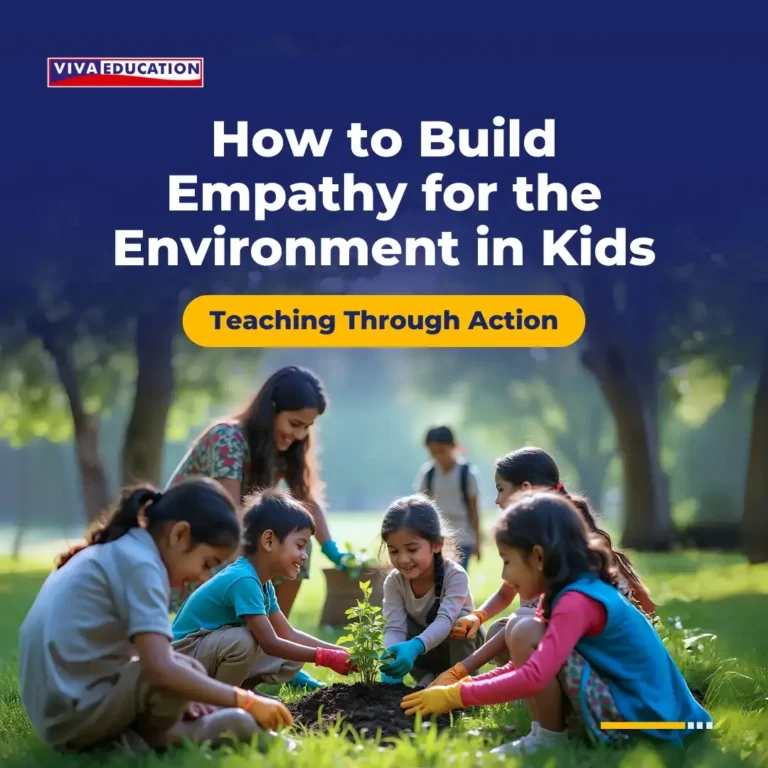The Power of Speaking and Listening Activities for Students: Fun Activities for Elementary Classrooms
- Teachers
- March 28, 2025
- Viva Education
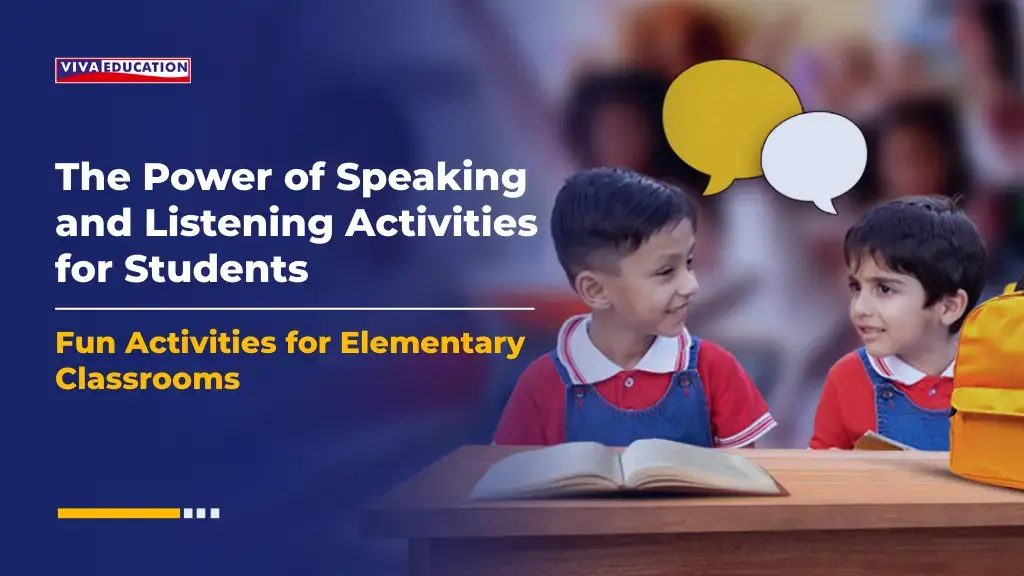
Teachers, you may have encountered this when encouraging a class to listen or encouraging a hesitant kid to speak up. Some children become sidetracked and overlook key instructions; others have brilliant ideas but fail to put them into words.
Classroom debates are typically imbalanced, with a few voices leading while others remain mute. When students don’t listen carefully or speak their thoughts confidently, lessons take longer, instructions must be repeated, and misunderstandings creep in, making learning and teaching harder for everyone.
You know that improving students’ listening and speaking skills can solve this. But how do you do it in a fun and exciting way? Through games and interactive activities, and in this article, we are going to discuss just that! So read on.
Playtime Learning: Activities for Speaking and Listening
Games are an excellent approach for children to improve their communication and listening skills. When students listen effectively, they understand instructions, learn new things, and form relationships with others. Students may share their thoughts, ask questions, and form connections when they speak confidently. According to research, children with great communication skills from an early age not only do better in school but also find it easier to deal with challenges and create meaningful connections as they grow older.
The following are some amazing and fun classroom activities for kids that elementary school teachers can implement.
Listening activities for students:
1. Simon Says
Simon Says is a fun game that improves listening and attention. One player, “Simon,” issues instructions, but players can only obey those that begin with “Simon says.”
Anyone who obeys an instruction without using this sentence gets removed. The game continues until just one player survives, becoming the next Simon. Simon can shorten instructions or include multi-step obstacles to keep things interesting. Teachers can create personalised versions, such as “Santa Says” for the holidays or “Coach Says” for a sports theme.
This activity encourages active participation and improves attention, response time, and the ability to follow directions correctly.

2. Do it when I Say Go!
“Do It When I Say Go!” is a fun game for improving listening, attention, and self-control. Players must wait for the word “Go!” before being instructed.
For example, if you say, “Pat your head,” they will remain motionless until you say, “Go!” To keep things interesting, vary the orders, pause suddenly, or include humorous activities. This fun task encourages patience and fast thinking while keeping students engaged.
Whether in the classroom or at home, it transforms listening practice into a fun game that children enjoy while improving their ability to follow directions precisely.
3. Broken Telephone
In this popular game, children sit in a circle and whisper messages from one to the next. The statement is frequently humorously different when it reaches the final participant!
It’s fun to show how easily messages can change, reinforcing careful listening and clear speaking. To add variety, try team challenges to see which group delivers the most accurate message, or replace words with actions for a movement twist.
Broken Telephone, whether played formally or creatively, keeps youngsters interested while improving attention, memory, and communication skills—and providing lots of laughs along the way!
4. Grocery List
Like Broken Telephone, Grocery List is a fun method to test children’s ability to listen and retain details! In this game, students take turns adding items to an imagined shopping list, but there’s a catch: they must remember every preceding item in sequence before adding their own.
It begins simply: “I’m buying apples.” The following person adds, “I’m buying apples and bread,” and the list continues to expand! What’s the challenge? Paying great attention to ensure that no details are overlooked.
This game improves memory and focus and teaches children the importance of paying attention while having a great time!
5. Yes or No?
This game is a simple yet powerful way to sharpen kids’ listening and response skills. The goal? Answer yes/no questions quickly and correctly—without overthinking!
Here’s how it works: One student asks a yes/no question, like “Is the sky blue?” or “Do elephants fly?” The other listens carefully and answers “yes” or “no.” Sounds easy, right? But it becomes an exciting challenge with rapid-fire rounds, time limits, and fun follow-up questions!
This game boosts listening comprehension, encourages clear responses, and keeps the classroom buzzing with energy and laughter.
6. Red Light, Green Light
This classic game isn’t just about running; it’s a fun way for kids to sharpen their listening skills and self-control while having a blast!
One player acts as the “traffic light” and calls out commands: “Green light!” means run, “Red light!” means freeze, and “Yellow light!” means slow down. The trick? Players have to listen carefully and react quickly! Anyone who moves at the wrong time goes back to the starting line.
Make it even more fun by pretending to be cars, animals, or astronauts on a spacewalk. Simple, exciting, and a great way to turn listening practice into playtime!
Speaking activities for students:
1. Story Chain
Have you ever started telling a story, only to have a friend jump in and take it in a completely unexpected direction? That’s precisely what happens in Story Chain! One student begins with a sentence, and each player adds to it, building a wild, unpredictable tale.
You never know where the story will go! One moment, the main character is in a jungle, and suddenly, they’re flying a spaceship. This game helps kids think on their feet, listen closely to others, and express themselves creatively.
Try adding a magical adventure or silly mystery theme to make it even more exciting.
2. Picture Talk
Ever looked at a picture and imagined the story behind it? That’s the idea behind Picture Talk! Show students an interesting image and challenge them to describe everything they see. But here’s the twist—they can’t just say “a dog” or “a house.” They have to go deeper.
“What’s the dog thinking? Why is the house so colourful? What happens next?” Asking these questions gets kids to stretch their imagination, use richer vocabulary, and become more confident in expressing their ideas.
Want to make it even more fun? Set a timer and see who can talk the longest without repeating themselves!
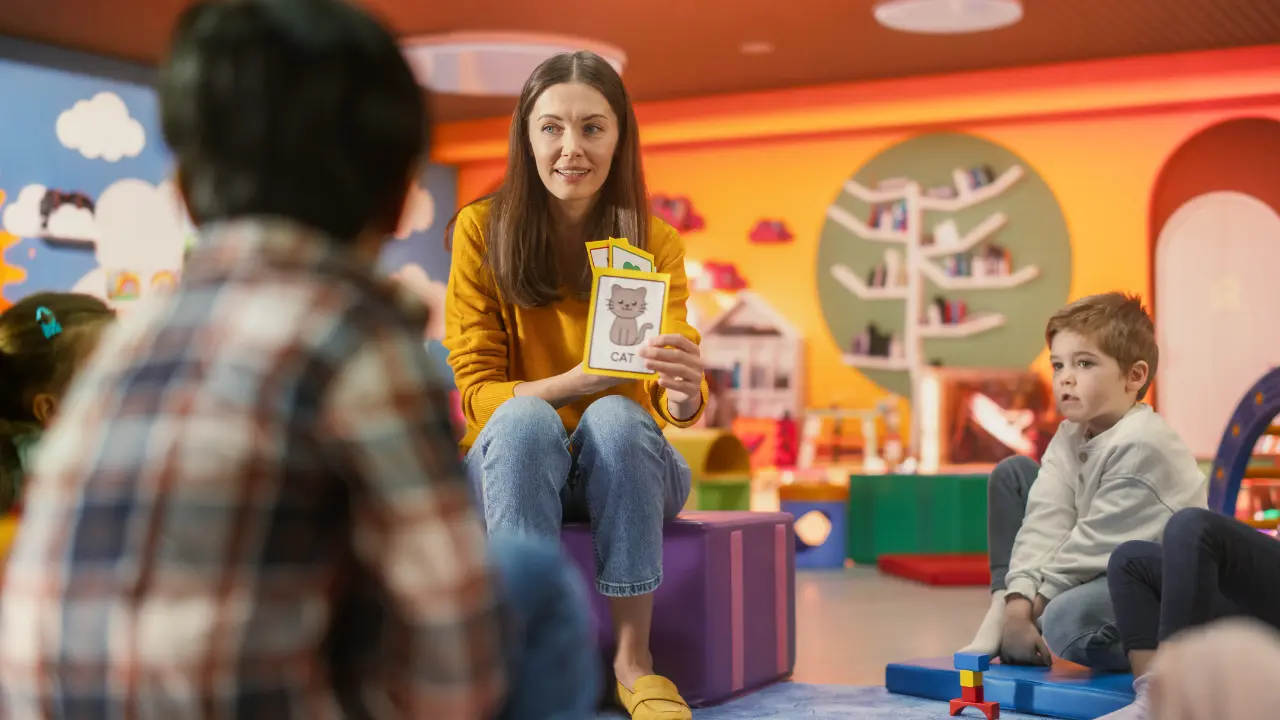
3. Debate Time
Choose a simple topic like “Summer vs. Winter” or “Books vs. Movies,” and divide the group into two sides. Each side must present its reasons and respond to counterpoints.
Encourage them to speak clearly, support their ideas with examples, and listen carefully to others before responding. Start with fun, light-hearted debates before moving to more thought-provoking topics.
This activity helps children develop structured thinking, persuasive speaking, and the ability to express opinions respectfully. It also teaches them how to handle disagreements constructively, an essential life skill!
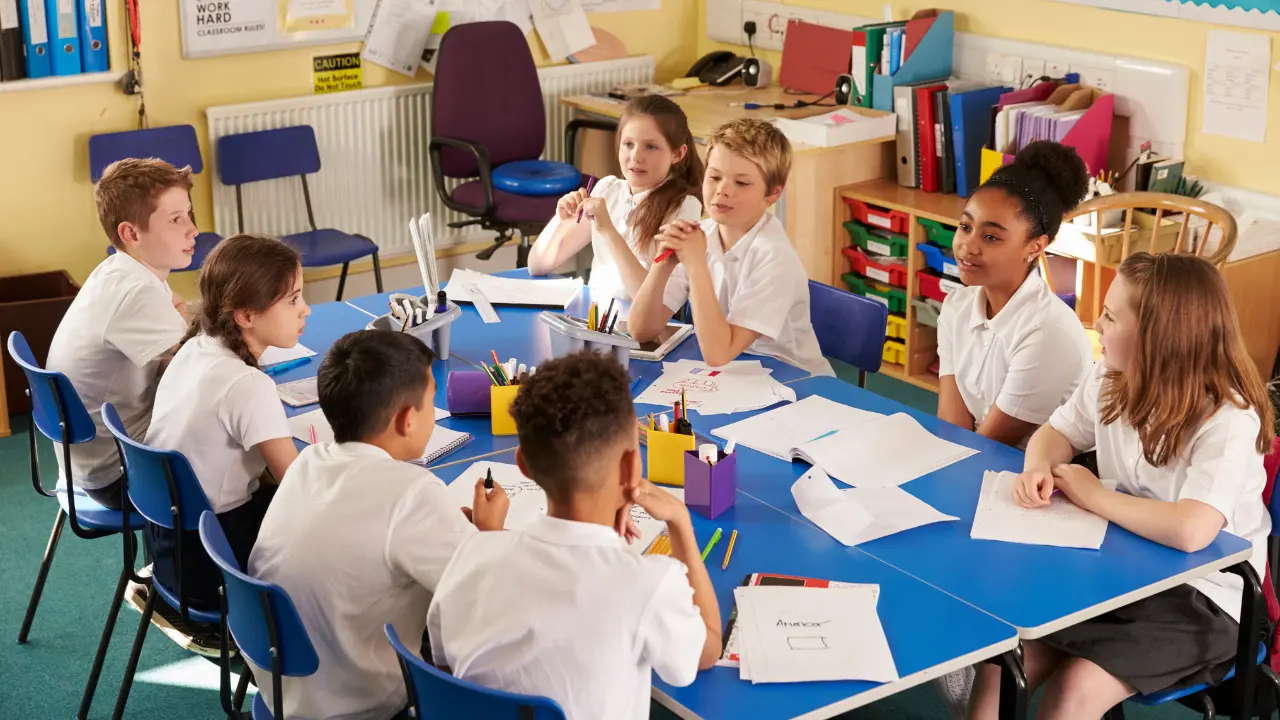
4. Role-Play Scenarios
This game is a perfect way to practice real-life conversations! Assign different roles (shopkeeper and customer, doctor and patient, etc.) and let kids act out everyday interactions.
This teaches them how to structure their responses, use appropriate vocabulary, and engage in back-and-forth dialogue. To make it more exciting, add a challenge, like using a new word in each conversation or changing the scenario to a funny or unexpected situation.
Over time, role-playing improves confidence, fluency, and the ability to think on their feet in different social situations. It’s also a great way to prepare them for real-world conversations!

5. 60-Second Challenge
Pick a topic and challenge kids to speak about it for 60 seconds without pausing. Topics can be as simple as “My Favourite Animal” or “A Place I Want to Visit.”
The goal is to keep speaking without stopping, which helps develop confidence, spontaneity, and the ability to think quickly. If they struggle, allow a partner to prompt them with questions. Over time, this game reduces hesitation, improves articulation, and makes public speaking feel more natural.
Plus, it’s a great way to build their ability to structure ideas on the spot!
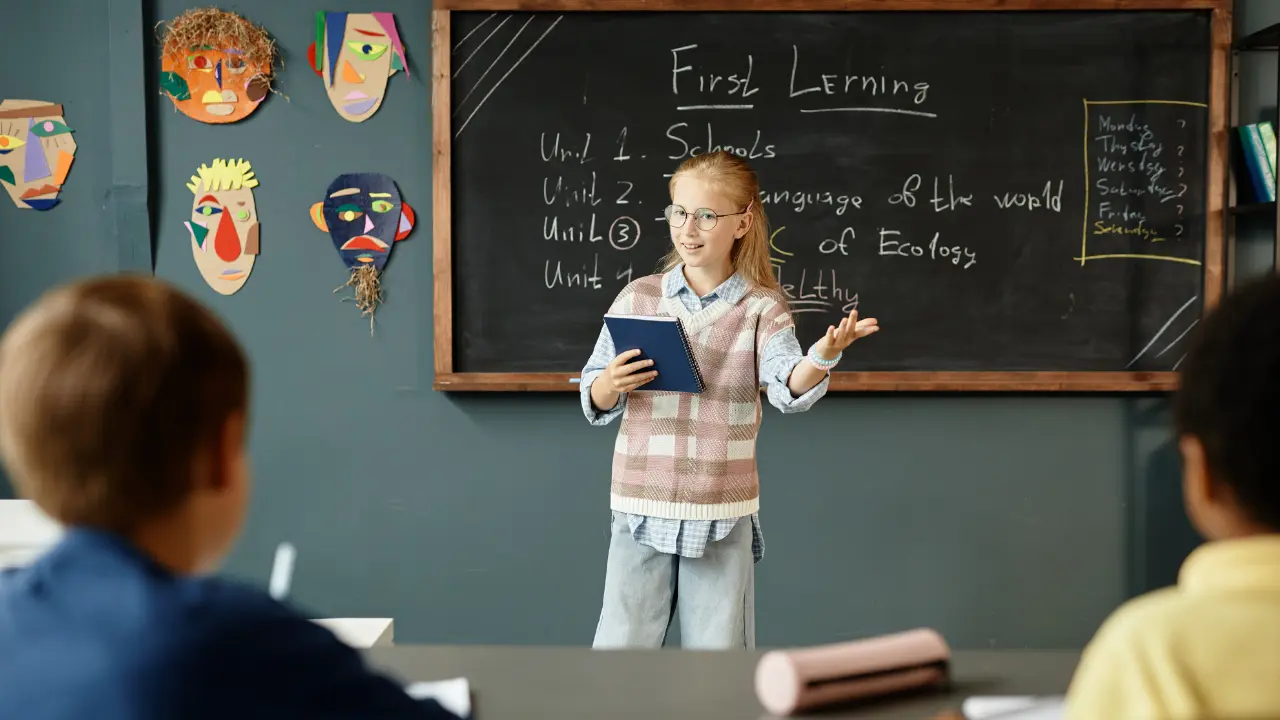
Speaking and Listening: Skills for Life
Every child has something to say, a thought to share, a story to tell. Sometimes, all they need is the right space to feel heard. When we encourage them to speak with confidence and listen with curiosity, we’re helping them connect with the world in a more inclusive way.
Imagine the quiet child who finally finds the courage to share their ideas, the distracted student who learns to focus, or the hesitant speaker who discovers their voice matters.
Choosing the right English books for schools is essential to further improving students’ skills. Viva Education offers a range of well-structured English books for schools that help students develop their speaking, listening, reading, and writing abilities. Their New Directions English series, designed per the latest curriculum, blends interactive exercises with engaging texts to make learning effective and enjoyable.
Explore Viva Education’s English books today and empower your students with the skills they need for a confident future! Buy Now
>> Please Share

